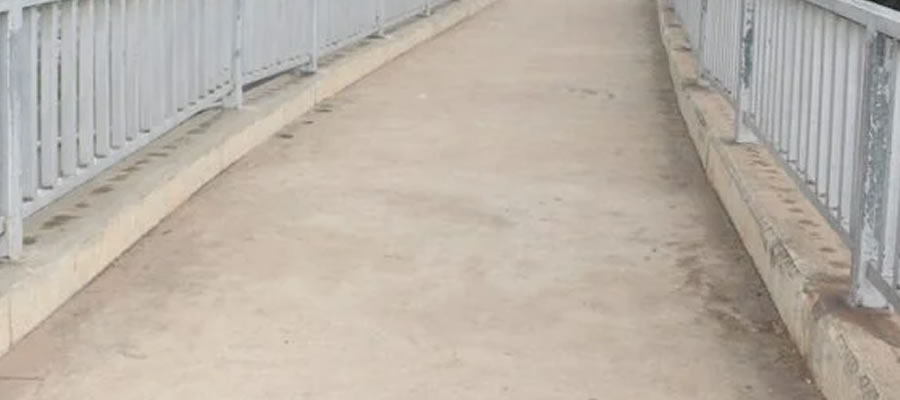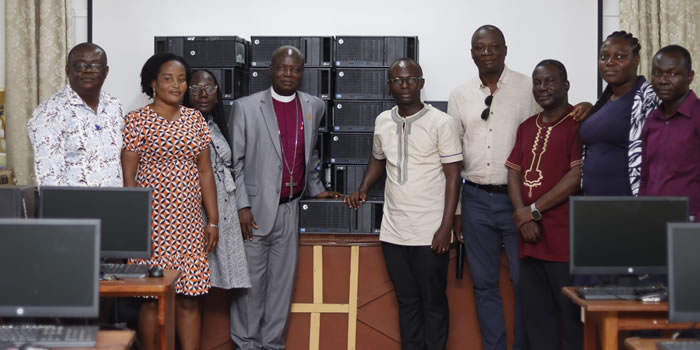

Energy
The problem of energy distribution
Firewood, charcoal, electricity, petrol, kerosene, and diesel are the main sources of energy used in Elmina. Recently, the use of gas stoves has gained acceptance . Most people use firewood and charcoal for domestic cooking purposes. A handful of them use liquefied petroleum gas in addition to the above. Fishmongers, for the smoking of fish, extensively use firewood.Almost every house in Elmina is supplied with electricity.
However, power outages and fluctuations of voltage are common phenomena in Elmina. The Electricity Company of Ghana (ECG) is the sole distributor of electric power in Elmina. Few individuals and organisations have standby generators to provide them with electricity in case of power outage.Petrol and diesel oil are used to fuel motor vehicles (cars, lorries) as well as engines of fishing vessels (boats), outboard motors fitted to canoes, and motor cycles. Kerosene is used in lamps, stoves and generators, among other appliances.
Resources needed for energy supply
The major resources used to produce energy, in Ghana generally, are water and wood. Wood is used for firewood and production of charcoal. Power in Elmina is received from the power generation stations in Ghana, particularly from the Akosombo Hydro Station. Occasional drought in the country affects power generation and subsequently the supply of power to the entire nation, Elmina being no exception. Generators, powered by petrol and diesel oil are used during power outages or during periods of power rationing.
Impact of Energy Use on the Environment
Increased demand for firewood and charcoal, and the subsequent increase in woodcutting for charcoal production has a strong impact on the vegetation and the environment in general. Deforestation is on the increase, and leads to land degradation and decreased soil fertility. The cutting of trees for firewood and charcoal production results in decreased vegetative cover.Within the larger scheme of things, this will result in higher environmental temperatures and evapotranspiration, less rainfall and dwindling water resources.
More immediately and locally, it leads to decrease soil fertility, lower agricultural production and increased soil erosion, silting of water bodies, and other environmental problems.Decreased vegetative cover results in high runoffs of water, which causes flooding in the lower areas of the town. Construction of houses has led to the removal of almost all the trees in Elmina Town. The only areas left with vegetative covers are the marshy land and areas along the lagoons and other water bodies.These low-lying areas, especially the lagoons, are covered with mangrove trees.These trees are a great resource of wood supply for the people of Elmina, especially the fishmongers.
Constant harvesting of such trees has almost depleted the mangrove, which do not only provide shelter for some birds and aquatic life, but protect the water from the direct rays of the sun and prevent excessive evaporation as well.The removal of vegetation along the banks has led to silt deposits in the lagoons. In addition, these water bodies have been turned into garbage dumps, making movement of water very sluggish. The dumping of refuse into, and silting of the lagoon have jointly facilitated further silt deposits and made movement of water almost impossible. As a result, the very existence of these lagoons as an economic resource is being threatened. The silting has also encouraged flooding of areas along the banks during heavy rains.
Transport And Communication
The town of Elmina is fairly accessible from the outside. Once you’re in there are only few roads that are very congested. Construction of more roads is however hampered by the topography of the town.From the transcontinental highway, three junctions lead to Elmina town. All the three roads link the main access road, the High Street. From here, other roads lead to the rest of the town. All the main streets in town have been tarred. However, indiscriminate cutting of the sections of the roads, particularly the main road, for {he connection of utility service lines, is destroying the roads.
Many houses are only accessible by footpaths. These are mostly the built up areas on or along the steep hills of Java, St. Joseph and Jago, and Sybil / Awenee suburbs Construction of access roads is hampered by the steepness of the hills, closeness of buildings or the presence of hard rocks on the surface of the land.In some areas, especially, between Tarkwa Peace House and the Fish Landing Bay through Post Office and Chapel Square, traffic is becoming a problem. The road is increasingly becoming congested. The roads are very narrow without pedestrian walkways as well cycle lanes. In effect, vehicles, cyclist, pedestrians and other road users compete with each other for space.
Due to the inaccessibility to most houses along the streets, vehicles are parked on the streets further narrowing the road. In addition, road regulations are not enforced giving vehicle operators, especially taxi drivers, the chance to stop and, or park indiscriminately to load and off-load passengers as well as goods.The fish-landing harbour is mainly used for fishing and related facilities. The fish landing is yet to be used for transportation and tourism purposes. However some goods are sometimes loaded in canoes and boats to other coastal towns in Ghana and other West African countries.
Transport for passengers and goods to and from Elmina, is provided by buses, mummy trucks and taxis. There are two passenger terminals in Elmina (Victoria Square and Mpoben-Fish Landing Market) where passengers board vehicles to Accra, Takoradi, Cape Coast and other surrounding towns and villages.Most vehicles that provide public transportation is privately owned, the largest number belonging to the Ghana Private Road Transport Union (GPRTU). The partly privatised State Transport Company (VANEF STC) has its nearest bus terminal at Cape Coast, but the Accra-Takoradi service does stop at Elmina on demand (to disembark). Passengers from Elmina Accra, Takoradi, or Kumasi have to go to Cape Coast.
The roads linking Elmina to Accra, Takoradi and Kumasi are of varying classes. The Elmina to Takoradi road is a first class road (asphalt), while the Elmina-Cape Coast- Kumasi road is in fair condition. The road to Accra is in a state of complete disrepair and needs to be rebuilt urgently. The government has announced in the 2002 Budget Statement that this road will be upgraded soon. The nearest airport is the Takoradi Air Force Station where light aircraft operate. However, the nearest International Airport is the Kotoka International Airport in Accra.
The nearest rail terminal and seaport are located in Takoradi (80 kilometres from Elmina). Rail transport in Ghana is of limited importance, with irregular and poor quality service. Sea transport is limited to goods only, although occasionally canoes are used for public transport along the coast. This cannot be called a form of mass transport, however.Elmina is poorly served with telecommunication network. There are only few people or organisations with telephone facilities or lines in Elmina Town. Even for the few facilities available reception is very poor. There are few fax machines in town. Mobile phones are not yet common among the local population.
There are no electronic mail and Internet facilities in Elmina. The demand (especially by tourists) for such facilities highly exceeds the supply. The nearest Internet cafe is situated in central Cape Coast.At the moment, there are forty (40) normal landlines and thirty-one (31) so-called ’will phones’ (wireless phones connected to the grid) in use in Elmina, according to Ghana Telecom figures. In addition, there are three (3) pay phones installed in Elmina; two in Elmina old town (old Post Office) and one at the SSNIT Flats.Radio and television reception in Elmina is of good quality. Many people own radio sets and a sizeable number of people also have television sets.
Three FM radio stations in Cape Coast service Elmina. Occasionally, transmissions from other radio station in Accra, Takoradi and Winneba can be received in Elmina.For television, it is only Ghana Television (GTV) whose transmission is received in Elmina. In addition there are some satellite dishes in the town that can receive DsTV (a South African Satellite TV Station that broadcasts among others CNN, Super Sport and Movie channels). The bigger hotels in the region have satellite reception.
Constructional Material Needs
The construction of roads has led to an increasing demand for land and construction materials. Roads need large quantities of gravel with direct consequences for the quarrying sector. With the steady expansion of Elmina Town, there is the need for the construction of more access roads to these new settlements or residential areas.Land around Elmina can provide adequate and required materials for the construction of roads. There are also well-established quarry sites at Cape Coast and Edugyei with distances of fifteen and ten kilometres respectively from Elmina, where materials are purchased for the construction of roads.
There are other small-scale - mostly illegal - quarries in and around Elmina. However, in most cases, no measures are taken to restore the land after quarrying or extraction of gravel for constructions’ The KEEA Municipal Assembly has little control over illegal quarrying and sand winning, in terms of policing it and fining and or persecuting the perpetrators.
The Structure Of Elmina And Impact On Transport And Communication
The narrowness of the roads and the competition by various road users allow only careful and slow driving. Fast driving endangers the many pedestrians who use these roads. Despite the obviously dangerous situation, many drivers, especially taxi drivers and lorry drivers pass through the High Street and Liverpool Street at excessive speed. Accidents occur regularly, and only recently, the population in the area has submitted a petition for road bumps to the District Chief Executive. Elmina Town used to have better telephone connections in the past than it has today.
This situation has arisen as a result of change in technology in the telecommunication industry. The equipment in use now is based on radio transmission and only allows signals to travel ten kilometres radius without amplification. Elmina is about fifteen kilometres from Cape Coast, where the nearest transmission and amplification installation stands.The available options (technology) that can help overcome these problems of reception beyond ten kilometres is expensive and currently Ghana Telecom cannot afford to put up more installations of this kind. In order to improve the communication situation, Ghana Telecom has mounted a transmission antenna at Elmina (SSNIT FLATS).
There is the promise from Ghana Telecom that when all the necessary equipment has been mounted on the mast, reception will improve and available telephone lines for subscribers will increase. Although a cheaper technological solution than the one mentioned above, the installation of the necessary equipment was delayed because Ghana Telecom was not able to secure a letter of credit (LC) from the government to import the equipment.E-mail and Internet facilities are absent, because the ’will phones’ used in Elmina cannot be used for these connections. The speed with which such transmission travels is much faster than the ’will phones’ allow.
Pollution Traffic
The volume of traffic in Elmina has increased over the years due to the increased number of visitors to the town. Although the use of motor vehicles is on the increase, air pollution is not yet a major problem in Elmina. However indiscriminate hooting of horns by drivers is becoming nuisance to the people of Elmina.
Date Created : 11/21/2017 5:33:45 AM








 facebook
facebook
 twitter
twitter
 Youtube
Youtube
 +233 593 831 280
+233 593 831 280 0800 430 430
0800 430 430 GPS: GE-231-4383
GPS: GE-231-4383 info@ghanadistricts.com
info@ghanadistricts.com Box GP1044, Accra, Ghana
Box GP1044, Accra, Ghana